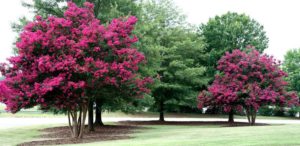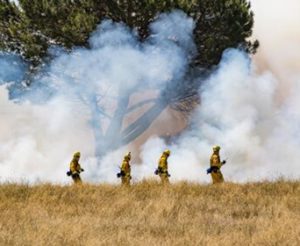FIRE RESISTANT PLANTS
Having recently experienced a bushfire come right up to the the boundary of my property and even burn a hole in a shirt of mine on my washing line!! I couldn’t help but think what sort of plants will not only survive should they burn, but will actually help prevent the fire from spreading up to and destroying my house. Below are some plant suggestions that will most likely survive a bushfire as well as help protect your home from ember attack.
It turns out some trees can actually help prevent the spread of fire which came as a suprise to me. Trees with a large canopy can help capture flying embers, preventing them from reaching the ground and igniting foliage and/or leaf litter and debris below. The canopy can also help reduce wind speed as a fire nears your home which can help reduce the reach of flame attack. Deciduous trees while in full leaf are especially good at reducing the chance of ember attack. Their leaves are unlikely to ingnite due to the moisture inside them, even if they do ignite, they won’t burn profusely. Trees like Liquidamber, Oak, Elm and Crepe Myrtle’s are suitable large trees. Native trees include Lilly pilly’s, Tuckeroo’s, Water gum’s and Illawarra flame trees. It is still recommended that even though these trees are unlikely to go up in flames, they are planted a safe distance away from the walls and roof of your house.

Shrubs and ground covers can also assist in the protection of you home:
These plants generally have fleshy leaves with high moisture content which is less likely to ignite should embers land in their foliage. Such shrubs include Agapanthus, Hydrangeas, Aloes, Oleander and Viburnum and ground covers include Dichondra, Ajuga, Scaevola, Pig face, most succulents and Myoporum. The healthier and well watered these plants are, the less likely they are to burn. Regular removal of dead leaves and debris is also recommended.

Having a garden in or near a fire zone doesn’t mean you need to keep a clear, vegetation free exclusion zone between the bush and your house. By using plants mentioned above as well as other preventative measures, you can ensure your property has its best chance of surviving the next fire season while also looking great for the rest of the year.
